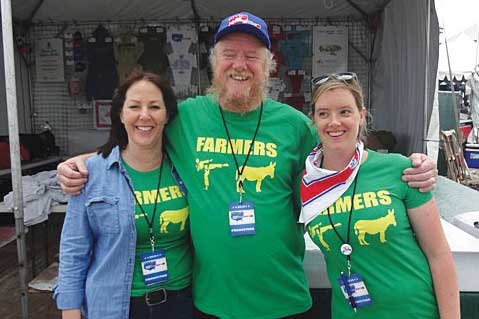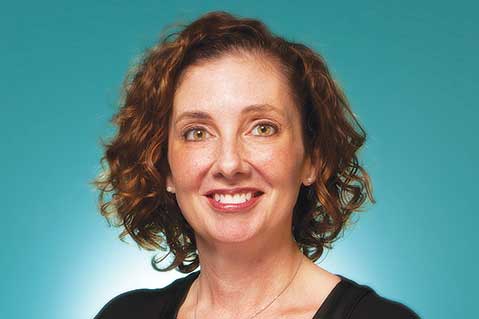News May 06, 2020
PPP Loan Process Frustrates Promo Firms
While some suppliers and distributors were able to gain quick access to funding, others have endured a messy application process and prolonged silence from lenders.
For Heather Comerford, applying for the Paycheck Protection Program (PPP) “was a horrific experience that turned into a full-time job for two weeks.” Her business bank put her on a waiting list before the CEO/president of 1338Tryon (asi/287946) in Portland, OR, was allowed to apply for the loan. She had to move on and applied with more than five banks, “each having their own application process, requiring different documents, all asking for information not required by the SBA [Small Business Administration] application,” Comerford adds.

The good news for 1338Tryon? The distributor received its PPP funds on May 4. But in trying to access the loan and grant programs set up in the $2.2 trillion CARES Act, not everyone in the promotional products industry has been so lucky, according to dozens of conversations and email exchanges Counselor has had with suppliers and distributors.
Many did report smooth and quick access to funding through the PPP, the federal government program set up to provide forgivable loans of up to $10 million to help small businesses keep employees on the payroll during the coronavirus pandemic.
But many others lamented a byzantine application process and a lack of communication from their lenders. Even when their applications were approved and PPP funds were deposited into their accounts, several expressed concerns about how to ensure their loans would be forgiven.
“I’ve been asking questions all along because it’s really confusing,” says Rick Roth, president of Mirror Image, a decorator based in Pawtucket, RI. “I’m really anxious about whether I’m following the rules because the rules are so unclear. I’m going to do the best I can.”

Rick Roth, Mirror Image
Promo companies’ experiences with the PPP and other CARES Act programs track with what other small businesses across the country have been reporting. The first round of PPP funding – $349 billion – was eaten up in just 13 days. The National Federation of Independent Businesses at the time reported survey findings that though three-quarters of small businesses had applied for the loans, only 20% had received money. Congress subsequently approved another $310 billion to replenish the program, and PPP loans reopened on April 27.
As of May 1, the SBA reported that it had approved $175.7 billion in loans for the second round of funding, with smaller amounts being given in an attempt to help more small businesses. Despite those efforts, however, many promo companies that submitted applications are still waiting.
Out of Luck
Sanford, FL-based supplier Brand O’ Guitar (asi/41461) applied for a PPP loan at five different banks, including the one that it’s been a multimillion-dollar customer with for more than 15 years. Though owner Gino Gavoni started the process the day the paycheck loan opened, he says he received no communication from any of the banks he applied with.
“It’s literally been goose eggs back,” he says.
He kept his nine-person staff on the payroll for five and half weeks, even though they weren’t able to do any work. “I didn’t want to lay off any of my employees, and I didn’t want them in the building either,” Gavoni says. Eventually, however, he was able to reopen as an essential business and has been having success manufacturing personal protective equipment (PPE) items. Now, Gavoni says, he’s not even sure he’d have a use for the money if it comes. “I really needed it a month or so ago,” he adds. “But we worked our way through it.”
Brett Cramer, president of Pompano Beach, FL, supplier The Spice Lab (asi/88719), had similar complaints. He applied three or four times through Chase Bank, but the system kept changing, and after several weeks, he was still waiting for an answer on his loan. “I’m in the queue somewhere,” he told his local CBS station recently.
Cali Rodriguez, owner of Disenoz (asi/181861) in Monroe, WA, applied for the PPP at three banks, as well as an Economic Injury Disaster Loan (EIDL) advance through the SBA and a grant through the state of Washington, but had gotten no response from any of the programs as of the end of April. Rodriguez has one other full-time employee but had to let a part-timer go as her sales dropped.
Michelle James, president of Apprize Promotional Products (asi/296308) in Hinsdale, IL, says she applied with her bank just before the PPP ran out of funds in the first round but hadn’t heard anything as of the end of April. “Frankly, I feel they’re out to help the big guys,” James says, “and us real small businesses will be ignored, as usual.”
That sentiment highlights the boiling anger of many small businesses across the country. Wells Fargo, Bank of America, JPMorgan Chase and U.S. Bancorp were all sued by small businesses that accused the lenders of prioritizing large loans and shutting out smaller firms that sought PPP money. A recent survey by the National Small Business Association found that the country’s smallest businesses – with 10 or fewer employees – had the hardest time getting approvals in the first round of PPP loans, with only 18% getting approvals. “Ultimately, it’s the people who don’t have the resources – the ones who need the money most – who were coming up short,” Joe Manganelli, founder of New York City-based financial management firm Calculate, told Inc.com.
Conversely, more than 100 public companies received nearly $500 million in PPP funds, according to Footnoted, an information service focused on Securities and Exchange Commission filings. These included several large restaurant and hotel chains, which had been granted an exemption from the stipulation that only businesses with 500 or less employees could receive CARES Act money. (The exemption allowed businesses with less than 500 employees per location to participate.)
.@steventmnuchin If PPP program wasn’t designed to help publicly traded companies, how come over 100 public companies have already received nearly $500m in PPP funds?
— footnoted (@footnoted) April 21, 2020
As a result of that rule, companies like Shake Shack received $10 million. Ruth’s Hospitality Group (which operates Ruth’s Chris Steak House) received $20 million – $10 million each for two subsidiaries. Energy and tech corporations were among the other publicly traded companies to receive large loans.
Following a public outcry, a number of larger companies have returned their money, including Shake Shack and Ruth’s Chris and other restaurant chains such as Sweetgreen and Potbelly. Other companies – such as Quantum, an 800-employee tech company that offers storage and data protection for small businesses – aren’t.
“The PPP loan is saving jobs at Quantum – without it we would most certainly be forced to reduce head count,” a Quantum spokesman told CNN. “We owe it to our employees – who’ve stuck with us through a long and difficult turnaround – to do everything we can to save their jobs during this crisis.”
Treasury Secretary Steven Mnuchin has said the money was “not for big public companies that have access to capital” and by all indications the second go-around will put more of a focus on small businesses. Smaller lenders will have greater access to stimulus money, which makes it more likely that the money will be funneled to small businesses. The SBA has also said it will be auditing loan applications for over $2 million and reminded larger companies that if they have adequate sources of liquidity, they may not qualify for a PPP loan.
Got my PPP money. It's in the bank. Also hearing of a lot more small businesses getting $$ in this round as well. So that's good. It's amazing what happens when giant companies aren't scooping up all the $$ in $10mm chunks. How's it going for everyone else??
— Marilyn Moedinger (@mwmoedinger) May 6, 2020
All Will Be Forgiven?
Even as millions of businesses remain locked out of PPP loans, the companies who did receive funding are still proceeding with caution. Comerford of 1338Tryon says she plans to bring some of her employees back into the fold, but not everyone at once. “Until I have a better idea of the forgiveness requirements, I’m reluctant to bring them all back, as business has not yet bounced back and I still need to be able to provide a safe work environment for those that are coming in, which means more space, cleaning, temperature taking and other safety implementations.”

Heather Comerford, 1338Tryon
PPP loans are set up to be 100% forgivable if small businesses meet certain requirements. At least 75% of the money is supposed to be used for payroll costs during the eight-week period after the loan is issued, though the other quarter can be used for approved expenses, such as rent, mortgage interest and utilities. Businesses are also supposed to bring back the same number of workers that had been employed there prior to the pandemic. Failing to do so could lower the percentage of the loan that’s forgiven.
Those rules have left Roth of Rhode Island screen-printing shop Mirror Image with many questions. “You’re supposed to have all your workers back by June 30,” he says. “What do you do if someone doesn’t want to come in?” For lower-wage workers who are benefiting from expanded unemployment insurance under the CARES Act, “They’re making more money than they’ve ever made before,” Roth adds. “How do you get them to come back?”
Roth is certainly not the only business owner with questions, and both the SBA and Treasury have been aware of these complaints. Over the weekend, the two departments updated their frequently asked questions document to note that an interim final rule would be created to ensure that borrowers’ forgiveness wouldn’t be compromised if a good-faith written offer to rehire an employee is rejected.
Scott Laursen, owner of The Printed Image (asi/302131) in Chico, CA, received a PPP loan early on through his bank, but after running the numbers he determined it would actually end up costing him an extra $7,000 to follow the payroll guidelines as written. His employees would be in the same boat as Roth’s, earning less money at work than they were on unemployment. “They would not be happy,” Laursen adds.
“We’re planning to just sit on the money and hope the rules change again,” he says. “Pretty unlikely, so we’ll probably just pay the loan back at the end of June.”
